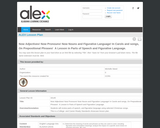
Students will review parts of speech and figurative language using selected Christmas songs.
- Subject:
- English Language Arts
- Material Type:
- Lesson Plan
- Provider:
- Alabama Learning Exchange
- Author:
- Michelle Steed
- Date Added:
- 02/26/2019

Students will review parts of speech and figurative language using selected Christmas songs.

I bribed my family with brownies to participate in an educational game night! In this video, we play a farm-themed word association game called Expression Connections taken from the Food, Land, and People curriculum. Try it out with your own family or classroom, and discover how many connections exist between you and the food that you eat!
Correlations to NC Essential Standards: Depends on how the lesson is adapted, but there is a lot of flexibility in this activity to be adapted to many standards in Science, Language Arts, and Social Studies.

Although Danny is a young adult of only 17, he is fully capable of taking his father’s boat out to sea to fish. While out on a solo trip one foggy morning, Danny encounters “something†mysterious in the water. In this CCSS lesson, students will explore this story through text dependent questions, academic vocabulary, and writing assignments.
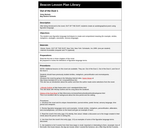
In this lesson, students read the novel "Out of the Dust" and create an autobiographical poem using figurative language.

When the land surveyor, Gleb Smirnov, arrives in the Gnilushka train station, he hires a peasant to take him to the estate that he must survey. This story shows how the reactions of one character, due to his fear, can lead to unexpected consequences and have a direct impact on the actions of the other character(s). In this CCSS lesson, students will explore this story through text dependent questions, academic vocabulary, and writing assignments.

Activities and worksheets on the use and identification of personification.

This is a digital anchor chart.
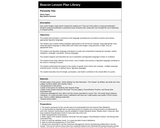
In this lesson, students study personification in published works of poetry, then create their own.
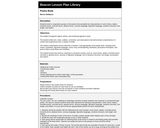
In this lesson, students work in cooperative groups to find poems that exemplify the characteristics of word choice, dialect, invented words, concrete terms, abstract terms, sensory language, figurative language, sentence structure, line length, and rhythm.
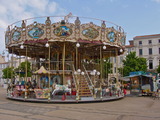
This is a brainstorming activity to gauge the depth and breadth of your student's poetic elements knowledge.You can use this as a pre assessment or formative assessment depending on your instructional needs.The slides can be changed depending on your grade level standards and the literary or poetic elements that you are focusing on in your instruction.

Poets achieve popular acclaim only when they express clear and widely shared emotions with a forceful, distinctive, and memorable voice. But what is meant by voice in poetry, and what qualities have made the voice of Langston Hughes a favorite for so many people?

This course was created by the Rethink Education Content Development Team. This course is aligned to the NC Standards for 6th Grade English Language Arts.

This course was created by the Rethink Education Content Development Team. This course is aligned to the NC Standards for 6th Grade ELA.

In this 3 day lesson plan on The Rhetorical Triangle from PBS Learning Media, students will focus on understanding Aristotle’s three elements of persuasive speech—the ancient Greek words ethos, pathos and logos. Additionally, students will be able to analyze the effectiveness of rhetorical strategies and elements in commercials and speeches.
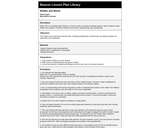
In this lesson, students explore word choice, paraphrasing, and summarizing by playing a vocabulary game to create riddles and answers.

Activities and worksheets on the use and identification of similies.
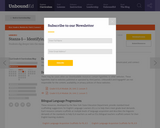
In this lesson, students will determine rules to live by from the poem "If," how these rules are communicated, and how these rules connect to Bud, Not Buddy.
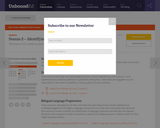
IN this lesson, very similar in structure to the lesson on Stanza 1, students will determine rules to live by and discuss how those rules are communicated, as well has how they connect to the rules/themes in Bud, Not Buddy.
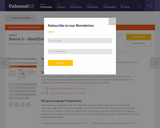
In this lesson, students will answer more questions independently in order to prepare for the mid-unit assessment.

In the summer of 1988, fires raged out of control in Yellowstone National Park. Though it seemed like total devastation to outsiders, the fires burned in only one-third of the park, and the new growth that resulted promoted the flourishing of certain birds, animals, and plants. In this CCSS lesson, students will explore this story through text dependent questions, academic vocabulary, and writing assignments.